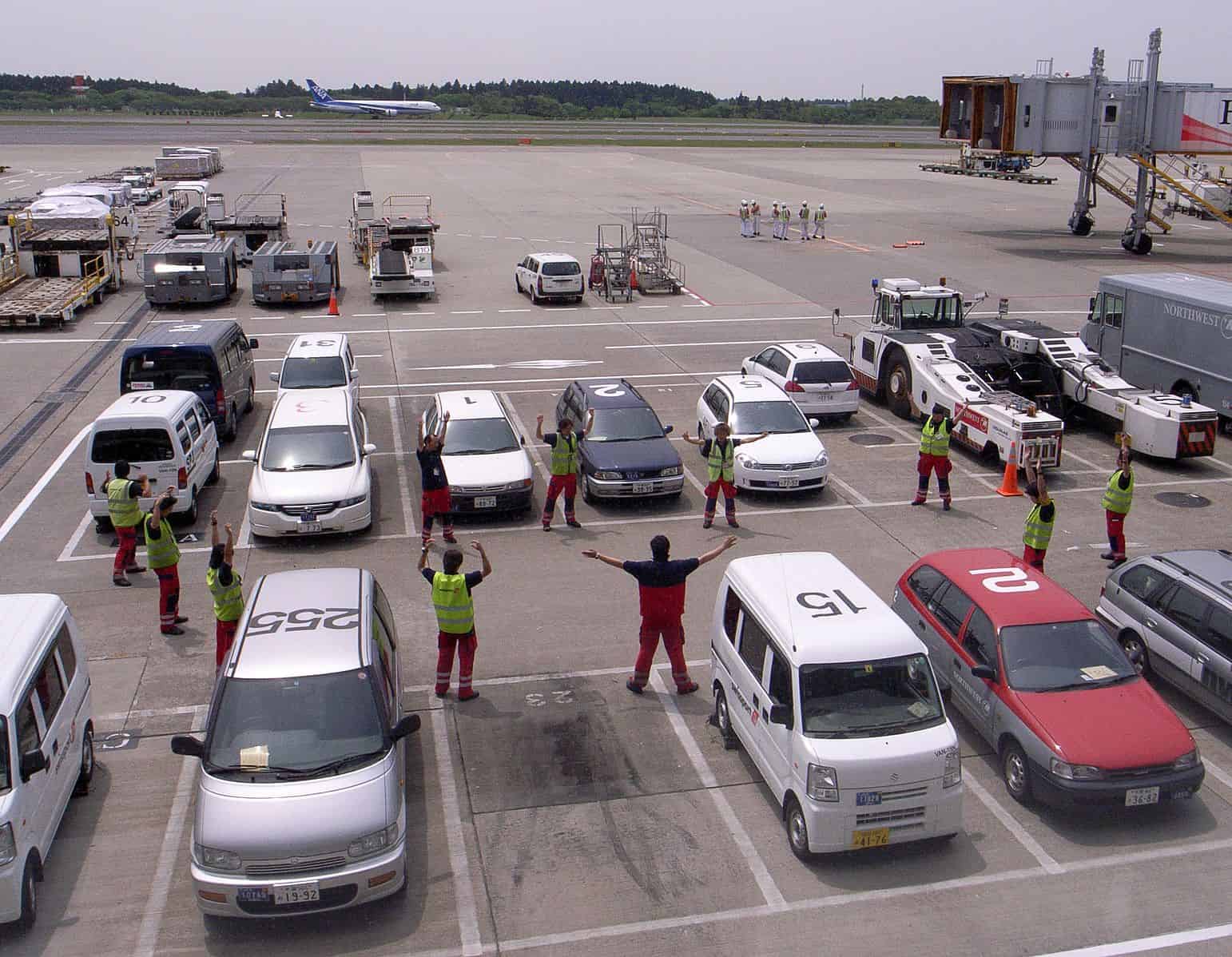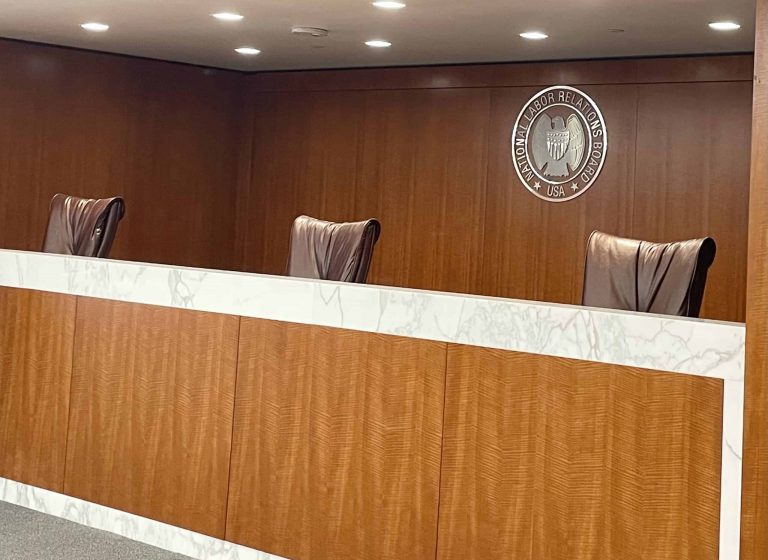
Tascha Shahriari-Parsa is a student at Harvard Law School.
“Employees shall have the right . . . to engage in . . . concerted activities for the purpose of collective bargaining or other mutual aid or protection.” So reads Section 7 of the NLRA. But what counts as “concerted” activity? And what kinds of activities are for the purpose of “mutual aid or protection”?
In 2019, in Alstate Maintenance, the NLRB narrowed the range of acceptable answers to these two questions. But last month, Acting General Counsel of the NLRB Peter Ohr rightfully suggested in a memo that the Board’s understanding of both the “concerted” and the “mutual aid or protection” prongs of Section 7 should be expanded. The soon-to-be Democrat-majority Board should overturn Alstate and strengthen the rights of workers to engage in concerted activity.
“Concerted” Activity?
Before determining whether a given activity is protected by Section 7, a preliminary question is whether the activity is “concerted.” Under the board’s longstanding precedent, activities “engaged in with or on the authority of other employees” count as concerted (Meyers I). These include individuals bringing group complaints, individual efforts with the purpose of inducing group action, and activities with “some relation to group action” (Meyers II).
In Alstate, a supervisor informed four skycaps that the airline manager was requesting their help with a soccer team’s equipment. One of the skycaps, Greenridge, responded: “We did a similar job a year prior and we didn’t receive a tip for it.”
Greenridge’s statement seemed to fit the “concerted” test in two ways. First, Greenridge acted as an “individual employee[] bringing truly group complaints to the attention of management” (Meyers II). Second, Greenridge’s statement would appear to qualify as an “individual[] effort[] to induce group action” (Mushroom Transportation) given that it actually did induce group action: Greenridge and his coworkers walked away from the van when it arrived, collectively refusing to help the soccer team.
Despite this, the Board majority ruled that Greenridge’s statement did not count as concerted activity. Although the Alstate ruling was a blow to Section 7 protections, this part of the opinion arguably rested on the fact that Greenridge testified that his remark was “just a comment” and was not aimed at changing the employer’s policies or practices. Thus, Alstate presents a narrow case: where an employee’s actions induce concerted activity, yet that employee testifies that they did not intend to induce such activity.
In her dissent, Board Member Lauren McFerran noted that Greenridge’s “post hoc, subjective belief” that his statement was “just a comment” is irrelevant, since the board should be using an objective standard, citing Fresh and Easy Neighborhood Market. The majority argued that McFerran conflated an analysis of whether an employee actually intended to induce concerted activity—which they argue is relevant—with whether the employee’s subjective motive behind pursuing that activity supported a protected purpose of “mutual aid or protection”—what Fresh and Easy makes clear is immaterial.
Nonetheless, the Board should overrule Alstate and hold that under the “some relation to group action” prong of the Meyers test, activity that tends to produce concerted activity is also concerted, regardless of the actor’s intent. Drawing any other distinction between “mere griping” and concerted activity is insufficient to be faithful to the language and purpose of Section 7. If speech intended to induce concerted activity is protected, so should be speech about working conditions that is necessary to lead up to a real discussion of concerted activity. Efforts to form unions do not usually begin with “hey, let’s start a union” or “want to go on strike tomorrow?”—they more often begin with “this sucks.” And ordinarily, workers making such statements are not contemplating concerted activity—the contemplation only arises after enough workers have expressed their gripes in cohort. Speech pertaining to workplace issues—including those that extend beyond “vital term[s] and condition[s] of employment” like wages or job security (Hoodview II)—should thus be more expansively protected by the Board as inherently concerted activity.
For the Purpose of “Mutual Aid or Protection”?
Although the Board in Alstate could have ended its analysis on a finding that Greenridge’s statement did not constitute concerted activity, the majority went out of its way to rule that, even if it had been concerted, it still would lack NLRA protection because his complaint didn’t have “mutual aid or protection” as its purpose. For workers who receive a “tipped minimum wage,” how could it be that agitation over tips does not serve their “mutual aid or protection”? What is the difference between concern over tips and concern over wages, which clearly do fall under the ambit of a protected purpose?
The Alstate majority argues that the issue is about employer control. “The amount of a tip given by an airline passenger to the skycap handling his or her luggage at curbside is a matter between the passenger and the skycap from which the skycap’s employer is essentially detached.” Even though prior Board cases have held that activity designed to “influence the influencers” is protected (Nellis Cab Company), the Board distinguishes such precedent by noting that the employer in Alstate “had no mechanism for, or history of, exerting pressure on airline passengers to provide skycaps more generous tips.” But if the Board is claiming that whether an activity is protected depends on the potential efficacy of the activity, that goes against established precedent that the merits of a complaint are irrelevant to whether it concerns mutual aid or protection (Spinoza). It is true that when a concerted activity bears “so attenuated” a relationship to employees’ interests as employees, it falls out of the ambit of the “mutual aid or protection” clause; however, concern over the primary means of employees’ sustenance from their employment is nowhere near this limit.
Alstate and Beyond
Overturning Alstate will be an important step by the Board to protect concerted activity, but the pursuit shouldn’t end there. As G.C. Ohr suggested in his recent memo, the Board should read “for the purpose of . . . mutual aid or protection” broadly to cover workplace-related political and social justice advocacy, “even when the employees have not explicitly connected their activity to workplace concerns.” The Board should also limit its 2020 holding in General Motors—which severely limited Section 7 protections for employees engaging in opprobrious conduct during concerted activity—to merely apply to cases where an employee’s opprobrious conduct constitutes discrimination on the basis of a protected status (rather than a few expletives uttered during contract negotiations, for example).
To truly protect the rights of workers to engage in group action, we also need legislative action. Most immediately, the PRO Act would protect additional forms of concerted activity, including quasi-strikes—partial, intermittent, and slow-down strikes—and secondary boycotts. The enactment of just-cause employment legislation is also important to protect concerted activity, as it would place the initial burden on employers to demonstrate that they are not engaging in retaliatory termination.
The right to engage in concerted activity is at the core of the NLRA, but it currently lacks the law’s adequate protection. Employers should not be privileged to retaliate against workers who act together to improve their lot. To affirm this basic principle of the NLRA, the Board should overturn Alstate.









Daily News & Commentary
Start your day with our roundup of the latest labor developments. See all
July 8
In today’s news and commentary, Apple wins at the Fifth Circuit against the NLRB, Florida enacts a noncompete-friendly law, and complications with the No Tax on Tips in the Big Beautiful Bill. Apple won an appeal overturning a National Labor Relations Board (NLRB) decision that the company violated labor law by coercively questioning an employee […]
July 7
LA economy deals with fallout from ICE raids; a new appeal challenges the NCAA antitrust settlement; and the EPA places dissenting employees on leave.
July 6
Municipal workers in Philadelphia continue to strike; Zohran Mamdani collects union endorsements; UFCW grocery workers in California and Colorado reach tentative agreements.
July 4
The DOL scraps a Biden-era proposed rule to end subminimum wages for disabled workers; millions will lose access to Medicaid and SNAP due to new proof of work requirements; and states step up in the noncompete policy space.
July 3
California compromises with unions on housing; 11th Circuit rules against transgender teacher; Harvard removes hundreds from grad student union.
July 2
Block, Nanda, and Nayak argue that the NLRA is under attack, harming democracy; the EEOC files a motion to dismiss a lawsuit brought by former EEOC Commissioner Jocelyn Samuels; and SEIU Local 1000 strikes an agreement with the State of California to delay the state's return-to-office executive order for state workers.